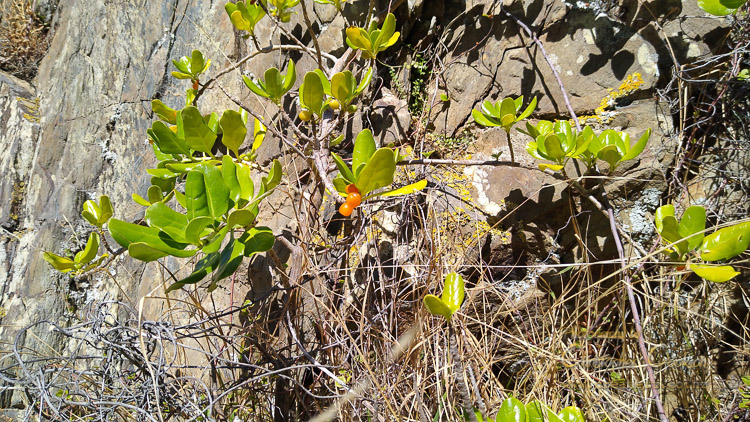Taupata (Coprosma repens)
Last Modified: 28-2-2021 10:55

© Christopher Cookson License this image
Coprosma repens or Taupata is a tough coastal shrub endemic to New Zealand able to withstand wind and salt spray, and is able to survive with little soil, often found in rocky coastal areas and on some offshore islands. It its natural coastal habitat, C. repens may not reach more than a metre in height, but under ideal conditions it can grow into a small tree up to eight metres. Taupata is dioecious, with separate male and female plants, with small, relatively indistinct flowers that are wind pollinated. Like many other members of the Coprosma genus, Taupata has bright orange ovoid berries with a diameter of up to 5mm and length up to 10mm, which are eaten by birds. The berries are edible, however were not a major part of traditional Māori diet, although Taupata was used in rongoā or traditional medicine. The seeds can be dried and roasted to create a coffee substitute, as Coprosma is in the same Rubiaciae family as coffee. Taupata has particularly shiny leaves, leading to one of its alternative names - mirror plant. It is also known as naupata.
Rarangi is the natural southern limit of Taupata's range on the east coast of the South Island, however although Taupata is an endemic species to New Zealand, it is a popular garden plant, readily grows from seed, and readily hybridises with other Coprosma species, making it a potential pest plant when introduced outside its natural range. A variety of garden cultivars have been developed. Garden escapes have resulted in Taupata becoming naturalised throughout the South Island. Outside New Zealand, Taupata is an invasive weed in several countries where it has been introduced.
This example was growing on rocks at Pukatea/Whites Bay.
Image Date: 27/2/2021
Photographer: Christopher Cookson
Location: Latitude: -41.388348 Longitude: 174.056